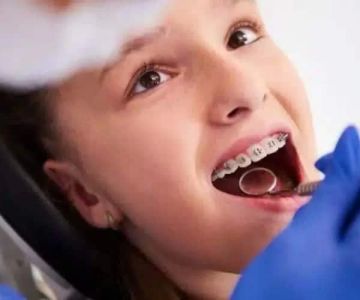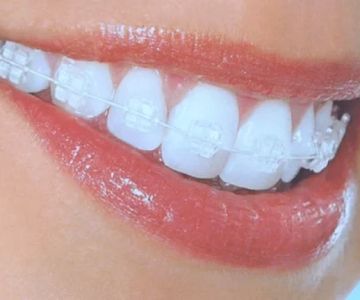Facial aesthetics are often closely linked with dental health, yet the impact of occlusion problems — irregularities in the alignment of the teeth — on facial appearance is frequently underestimated. In the United States, where smiles are a significant part of personal and professional impressions, understanding the influence of malocclusion (misaligned teeth and jaws) is crucial. At Dentistry Toothtruth, we explore the extent to which these dental issues can shape our facial features and why addressing them is essential for both functional health and cosmetic appeal.
The Effect of Malocclusion on Facial Structure
Malocclusion can substantially influence the symmetry and overall look of the face. The dental and skeletal discrepancy can lead to noticeable changes in jawline, cheekbones, and even the overall length and width of the face. For instance, an overbite or underbite can cause the jaw to protrude or recede, impacting the natural balance of the face. According to a study published by the American Journal of Orthodontics and Dentofacial Orthopedics, facial asymmetry due to occlusal misalignments is not just a cosmetic concern but also affects psychological well-being, reinforcing the importance of orthodontic interventions.
Functional Impact and Its Aesthetic Repercussions
Beyond the immediate visual aspects, occlusion problems can lead to a cascade of functional issues that indirectly affect facial appearance. Improper alignment can result in increased wear and tear on teeth, muscle strain, and even temporomandibular joint (TMJ) disorders. This muscle strain and discomfort can alter facial expressions and posture, subtly changing facial aesthetics over time. Addressing these functional challenges through appropriate orthodontic treatments not only restores functional efficiency but often leads to harmonious facial proportions.
Case Studies: Real Life Transformations
Numerous cases documented by orthodontists in the U.S. illustrate dramatic transformations post-treatment. One such case involved a young adult with a severe underbite, which, after corrective surgery and orthodontics, not only improved chewing and speech but also enhanced facial harmony by aligning the jaw and teeth correctly. Such stories underscore the profound impact of dental treatment plans on enhancing not just oral health but also boosting self-confidence through improved facial aesthetics.
The Role of Comprehensive Orthodontic Assessments
A comprehensive orthodontic assessment is crucial in understanding the multifaceted effects of occlusion issues on facial aesthetics. Treatments are tailored to address specific imbalances and often involve a combination of braces, aligners, or even surgical intervention in severe cases. Collaborating with talented orthodontists offers a pathway to personalized solutions that consider both aesthetic and health aspects, ensuring a holistic approach to dental care.
Aesthetic Benefits of Addressing Occlusion
Correcting occlusion problems stands to provide numerous aesthetic benefits, alongside improved oral functionality. Enhanced facial symmetry, better contouring of the jawline, and a more balanced smile are just a few of the positive outcomes. Emphasizing these benefits encourages proactive management of dental health issues among the American populace, prioritizing interventions that support long-term facial and dental well-being.
In conclusion, recognizing the significant role that occlusion problems play in shaping facial appearance is vital. As highlighted by Dentistry Toothtruth, addressing these issues can lead to striking improvements in both aesthetics and oral health. We recommend individuals seek regular orthodontic evaluations to tackle misalignments early on, thus safeguarding their smiles and facial symmetry while enhancing their overall quality of life.




 Westgate Dental Arts
Westgate Dental Arts Coventry Family Dental
Coventry Family Dental Familia Dental
Familia Dental Dr. Daniel S. Fife, DDS
Dr. Daniel S. Fife, DDS Dentistry At Suburban Square: Michael I. Wollock, DMD
Dentistry At Suburban Square: Michael I. Wollock, DMD Comfort Care Dental
Comfort Care Dental The Importance of Oral Health Education During Pregnancy for a Healthy Pregnancy
The Importance of Oral Health Education During Pregnancy for a Healthy Pregnancy Why Skipping Dental Checkups Can Lead to Bigger Oral Health Problems
Why Skipping Dental Checkups Can Lead to Bigger Oral Health Problems Advantages of Porcelain Dental Restorations
Advantages of Porcelain Dental Restorations Best Tips for Brushing Your Teeth Properly for Healthy Gums: Essential Techniques for Oral Health
Best Tips for Brushing Your Teeth Properly for Healthy Gums: Essential Techniques for Oral Health How Can Diabetes Cause Tooth and Gum Problems? Preventing and Managing Oral Health Issues
How Can Diabetes Cause Tooth and Gum Problems? Preventing and Managing Oral Health Issues Healthy Habits for Promoting Good Oral Health and Hygiene: Tips for a Healthy Smile
Healthy Habits for Promoting Good Oral Health and Hygiene: Tips for a Healthy Smile